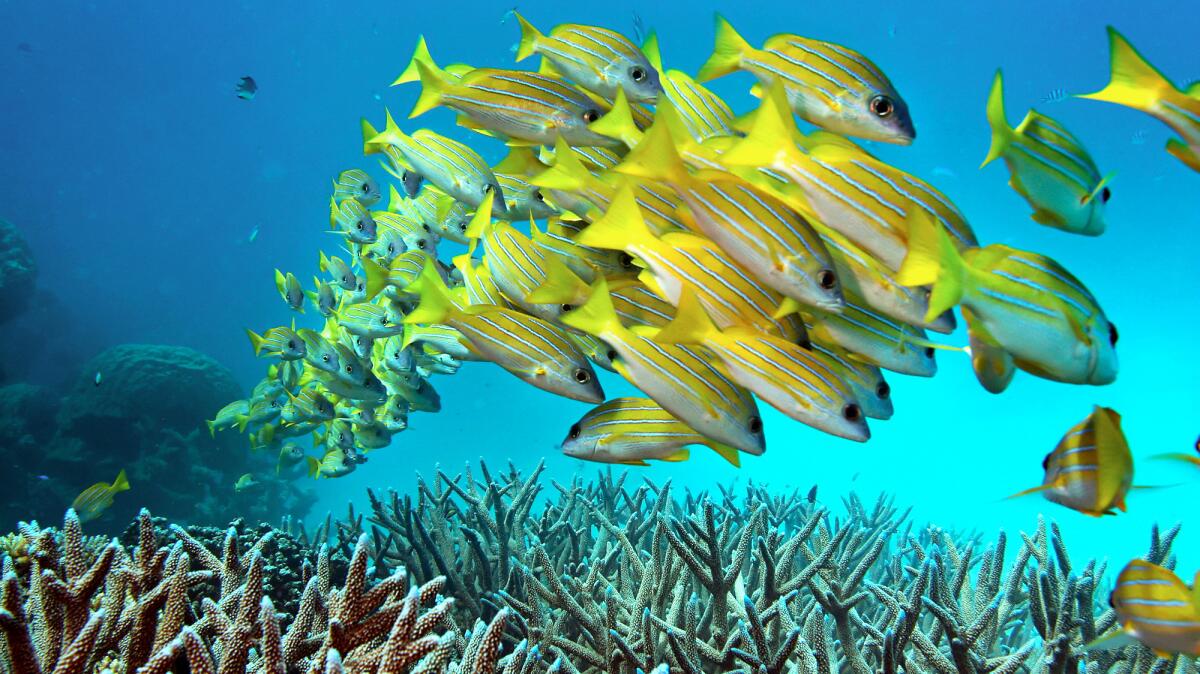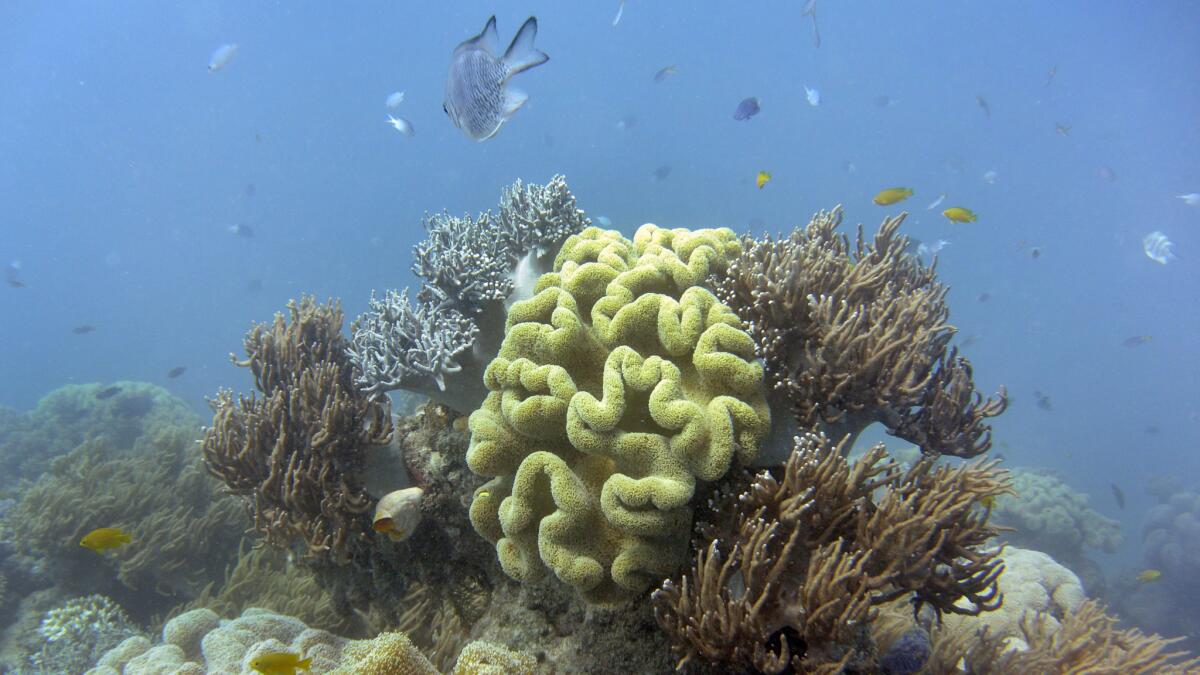No, the Great Barrier Reef in Australia is NOT dead. But it is in trouble.

Perhaps you’ve heard that the epic, 1,400-mile-long Great Barrier Reef in Australia has died.
Perhaps you have read its obituary by writer Rowan Jacobsen on the website Outside Online.
But before you start mourning the loss of what Jacobsen calls “one of the most spectacular features on the planet,” the community of scientists that study coral reefs in the Pacific ocean would like you to hold up, slow down, and take a deep breath.
The news isn’t good, but it may not be as dire as the obituary may have you believe.
“For those of us in the business of studying and understanding what coral resilience means, the article very much misses the mark,” said Kim Cobb, a professor in Georgia Tech’s School of Earth and Atmospheric Sciences. “It’s not too late for the Great Barrier Reef, and people who think that have a really profound misconception about what we know and don’t know about coral resilience.”
It’s not too late for the Great Barrier Reef, and people who think that have a really profound misconception about what we know ... about coral resilience.
— Kim Cobb
Cobb spoke to the L.A. Times about the state of the world’s largest reef system, and why there is reason for both concern and hope.
Is the Great Barrier Reef dead?
No. It’s not. We just had a massive bleaching event, but we know from past research that corals are able to recover from the brink of death.
So bleached corals aren’t dead corals?
That’s right. There’s lots of confusion about what bleaching means.
Coral is an animal, and the animal exists in symbiosis with photosynthetic algae. The algae provides food for the coral in exchange for a great home. But when the water gets too warm, the algae become chemically destructive to the coral.
When that happens, the coral convulses and spits out puffs of algae to protect itself. That removes all the color from the coral tissue which is transparent, allowing you to see right through to the underlying skeleton. So you are not necessarily seeing dead coral, you’re really just seeing clear coral without its algae.
But bleaching is still bad, right?
Bleaching events are worrisome because if the coral misses this key food source from the algae for too long it will literally starve to death. But, if the water temperature comes back down, it will welcome the algae back. The key is that the water temperature change has to be relatively quick.
When was the massive bleaching event?
It started with the Hawaiian islands bleaching in the early part of 2015 due to a moderate El Nino event in 2014-2015. After that there was the build up to the massive El Nino that culminated in the warmest ocean waters during the November 2015 time frame.
Unfortunately, these warm waters didn’t release their grip on many of the Pacific reefs until the spring of 2016, so that’s nine months of pretty consistently high temperatures. That is a long time for a coral to be in a mode of starvation.
Read more: Underwater microscope catches corals dancing in their natural habitat »
Has the Great Barrier Reef been through anything like this before?
It has had very severe bleaching events associated with large El Ninos like we had last year, but the problem is we are seeing baseline ocean temperatures getting warmer every year. When you pile a strong El Nino on top of this ever warming trend, you get more extreme and more prolonged bleaching episodes.
What was striking about this year was the extent of the damage. It was staggering. By important metrics the ’97-’98 El Nino was bigger, but the damage from this last one was far more extensive.
So how can you remain hopeful about the fate of Great Barrier Reef and other reefs in the Pacific?
I work on a research site in the Christmas Islands that is literally smack in the middle of the Pacific Ocean, and which was much more devastated than the Great Barrier Reef. It was worse off than any reef in the world with up to 85% mortality. But even in the face of that whole-scale destruction, we saw individual corals that were still alive, looking like nothing had happened.
I cling to that. I know from my own site that there is a lot more resilience baked into the system then we can hope to understand right now and that out of the rubble will come a reef that may not look exactly like it looked before, but may be better adapted for future temperature change.
It kind of sounds like an awesome research opportunity.
You better believe it! This is a window into the future of global reefs. It’s a great natural laboratory.

Do you love science? I do! Follow me @DeborahNetburn and “like” Los Angeles Times Science & Health on Facebook.
MORE IN SCIENCE
By adding an antibody to HIV treatment, researchers send virus into ‘sustained remission’ in monkeys
Surprise! The universe has 10 times as many galaxies as scientists thought
The most sought-after drug in the Ebola crisis failed to prove it helped patients




